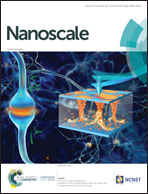A BN analog of two-dimensional triphenylene-graphdiyne: stability and properties†
Abstract
Motivated by the feasibility of hybridizing C- and BN-units as well as the recent synthesis of a triphenylene-graphdiyne (TpG) monolayer, for the first time we explore the stability and electronic band structure of the Tp-BNyne monolayer composed of C-chains and the BN analog of triphenylene (Tp-BNyne) by using density functional theory. We find that the single layer Tp-BNyne is stable and exhibits a semiconducting character with a direct band gap of 3.78 eV. The band gap of Tp-BNyne can be flexibly tuned in a wide range by applying uniaxial straining in different directions, or by changing the length of the carbon chain, or by stacking in multilayers with different configurations, while the feature of a direct band gap can be well maintained. These intriguing characteristics endow the Tp-BNyne monolayer with additional advantages over the pristine TpG monolayer, which would stimulate more effort on the design and synthesis of novel 2D materials with high stability, tunable porosity, and controllable functionality for nanoelectronic and optoelectronic applications.



 Please wait while we load your content...
Please wait while we load your content...